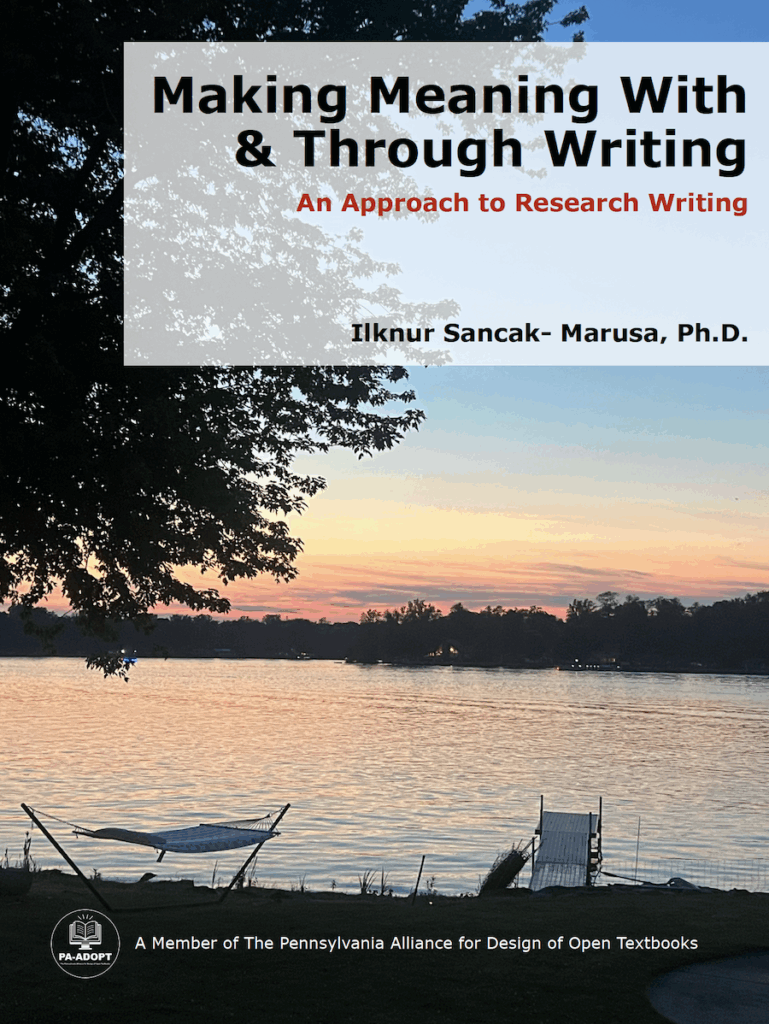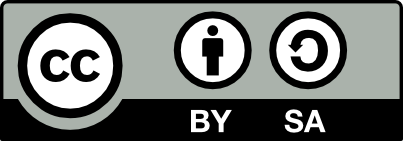Making Meaning With & Through Writing: An Approach to Research Writing
by Ilknur Sancak-Marusa, Ph.D.
Keywords: Academic Writing, Research Writing, Writing Skills, Writing Process

About the Book
Academic writing is an act of intellectual translation which converts raw ideas into academic discourse to bridge the gap between writer and reader. However, writing is often viewed as a mechanical skill rather than an intellectual craft. This brief text reframes academic writing as a translation process that transforms complex thoughts, research findings, and abstract concepts into purposeful, persuasive writing.
Using the writing process as the foundation, each chapter aims to provide a practice to navigate the recursive nature of writing. To that end, fundamental translation principles are utilized to analyze audience needs, understand scholarly articles, synthesize and craft arguments that resonate across disciplinary boundaries.
Writing isn’t separate from thinking as it allows us to refine our ideas and share them with others in meaningful ways. Embracing this connection between writing and its impact, positions an individual as an active participant rather than a passive observer in conversations that shape disciplines and the world-at-large. This writing guide seeks to equip students with the essential tools needed to engage meaningfully in the communities they serve and soon will discover.
Chapters
- Introduction
- General Education Requirements
- Chapter One: Theory of Writing
- Chapter Two: Rhetorical Situation
- Chapter Three:Writing Process Matters
- Chapter Four: Genre and Genre Conversations
- Chapter Five: Synthesis and Analysis in Research Writing
- Chapter Six: Academic Research Writing
- Chapter Seven: Understanding Scholarly Articles
- Closing: Just Keep Writing…
General Information
- Publication Year: 2025
- Edition: First
- Subject: Academic Writing
- Latest File Update: November 5, 2025
License

This work is licensed under a Attribution-ShareAlike 4.0 International (CC BY-SA 4.0) as a part of PA-ADOPT, except where otherwise noted.
Usage
Readers
The eTextbooks created as a part of this program are provided in two formats: ePub and PDF. Please refer to our Reader Support section for guidance on which format may be best for you and the device(s) you use.
Instructors
If you are an instructor seeking to use this eTextbook in your own course(s) please feel free to download the ePub and/or PDF file(s) for your use, but make sure to complete our eTextbook Usage Survey (this information is used for program evaluation purposes).
If you are interested in making revisions and edits to this eTextbook please note that this is possible since the book is under a Creative Commons License, which allows you to remix, reuse, revise, and redistribute the eTextbook. Please refer to the Faculty Support Page, specifically looking at Remixing. You can download Making Meaning With & Through Writing: An Approach to Research Writing Pages File in order to use the original document to revise and remix the eTextbook for your purposes.
Citations
MLA: Sancak-Marusa, Ilknur. Making Meaning With & Through Writing: An Approach to Research Writing. First, The Pennsylvania Alliance for Design of Open Textbooks (PA-ADOPT), 2025.
APA: Sancak-Marusa, I. (2025). Making meaning with & through writing: An approach to research writing (1st ed.). The Pennsylvania Alliance for Design of Open Textbooks (PA-ADOPT).
Chicago: Sancak-Marusa, Ilknur. Making Meaning With & Through Writing: An Approach to Research Writing. 1st ed. The Pennsylvania Alliance for Design of Open Textbooks (PA-ADOPT), 2025.
Peer Review
This eTextbook went through an Open Peer Review process. The peer review process used the Open SUNY Textbook Peer Review Guidelines, allowing peer reviewers to read the text carefully and evaluate the following:
- Educational Significance of Content including accuracy, appropriate and useful materials, valid and significant concepts, models, and skills, and key elements;
- Effectiveness as a Teaching Resource including a clear explanation of the concepts, alignment of materials to the learning process of the target audience, and alignment of the learning objectives with course goals; and
- Readability and Ease of Use including clarity and comprehensiveness, consistent writing style, readability and ease of use (logic, sequence, and flow), appropriateness for target readership level, and quality of Interactivity and multimedia learning objects.
As a part of the open peer review process, the public review conducted by Dr. Stacy Esch is made available: Peer Review Document (PDF).